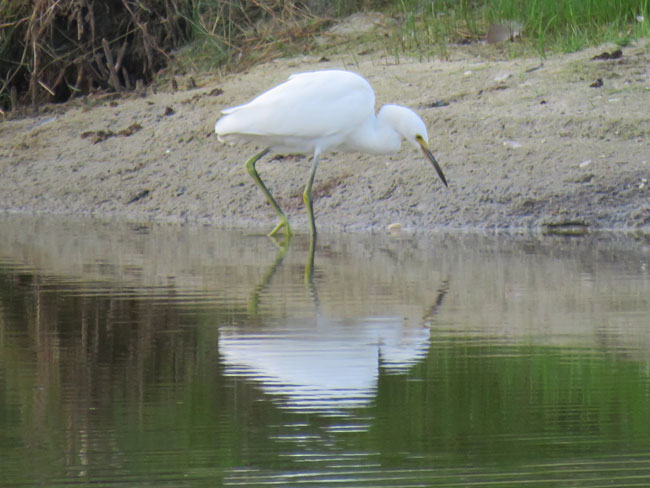
On Tuesday we left early to vote in the Connecticut primary and then drove down to the pond by way of the road along the Thames River. Some of the river’s banks are covered with an unattractive cement ramp, but, I happened to notice a swamp rose mallow popping through it as we were driving by.

Fascinated, I asked Tim to stop the car so I could hop out and examine the wildflower up close. How could it be growing in such an inhospitable spot? It wasn’t that big yet, maybe 2 feet tall, and I wonder how high it might be able to grow there. (They can grow to 7 feet, and the flowers are 4-6 inches in diameter.)

As I was enjoying the close encounter I noticed another wildflower growing through another seam. I loved the shades of purple on its petals.


Back in the car and on to the pond. So sad to see even less water remaining in it. I’m surprised the shorebirds don’t do their fishing over at the beach but they must have their reasons for hanging out here still.



Nature, like a loving mother, is ever trying to keep land and sea, mountain and valley, each in its place, to hush the angry winds and waves, balance the extremes of heat and cold, of rain and drought, that peace, harmony and beauty may reign supreme.
~ Elizabeth Cady Stanton
(Elizabeth Cady Stanton, Feminist as Thinker: A Reader in Documents & Essays)





We’re supposed to get a break from the heat and humidity this weekend, which will be nice, but we also need some rain!











































